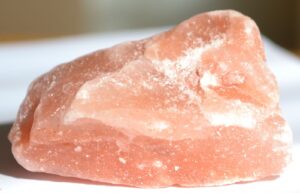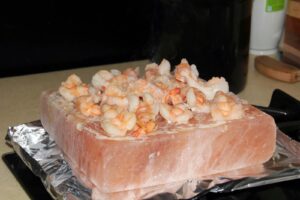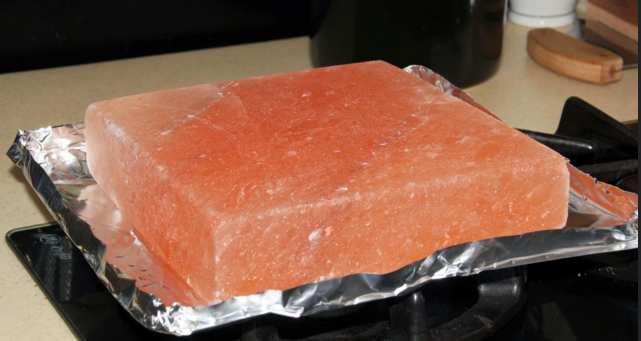Hand carved and formed to resemble a slab, a Himalayan salt block contains magnesium, iron, zinc and manganese. All these minerals are responsible for it’s lovely pink hue.
Trending in many kitchens worldwide, there are many creative ways to prepare or cook your vegetables, seafood, chicken and even cold dishes like sushi.
Why would you want to own one of these?

Himalayan salt is considered one of the purest forms of salt available, mined from the Himalayan mountain range. Well known as “pink gold” to the locals, it’s pollutant free and completely unrefined, relied upon since the ancient times for the human diet.
When heated, these slabs actually change color over time, very much lie a cast-iron skillet or wok which has been well seasoned with use.
Himalayan salt is rich in calcium, iron and 84 trace minerals, making this a very powerful cooking tool. Supplying our body with much needed elements, it also contains a small amount of bio available calcium, iron, potassium and magnesium. Slightly lower in sodium when compared to other regular salts makes for a healthy dose of amazing tasting food!
Amazingly, when using one of these slabs, one never over or under-seasons their food. They provide just the right amount of flavor!
Being naturally antimicrobial, this may be the safest cooking utensil one ever owns. Salt is well known to have been used throughout the ages to preserve food and kill off harmful microbes.
These slabs are also heat and cold resistant, so chilling food on them in the fridge or placing them on the grill will have no ill effect whatsoever. These slabs should be able to handle between 0°F and 900°F (-17°C to 482°C) effortlessly. However, one should never expose the blocks to sudden temperature changes, allow 24 hours rest in between.
 How do I use my block for cooking?
How do I use my block for cooking?
Working best on a gas stove or grill, one shouldn’t use these slabs in an over. When placed on a gas stove, start off low and gradually increase the temperature.
It should take approximately 30-40 minutes to reach the desired temperature of around 300°F (149°C). The trick is to budget with plenty of time. Also remember to allow the slab to cool completely before cleaning.
At the end, the results will be well worth it! Enjoy!
Thank you Living Traditionally for this great article.
Feature picture: On Deck With Kathleen

